Posts Tagged ‘Floriana’
-
Gone but not forgotten
“St. George Preca used to say that the cemetery is the biggest book and I had the opportunity to confirm that,” revealed a Capuchin friar who served as a custodian of the Addolorata cemetery for some years. Living among the dead, day and night, helped him to learn much about humanity and its weaknesses.
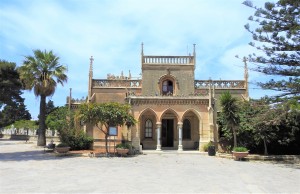 “The Capuchin friars were selected by the British authorities to administer this cemetery because they were loved by the locals. They had always been the ones who stood by the people during the worst moments and in situations which others avoided,” explained researcher Eman Bonnici.
“The Capuchin friars were selected by the British authorities to administer this cemetery because they were loved by the locals. They had always been the ones who stood by the people during the worst moments and in situations which others avoided,” explained researcher Eman Bonnici.“The British authorities hoped to attract people to bury their dead at the Addolorata cemetery. One of the best architects, Emanuele Luigi Galizia, was chosen to design this magnificent cemetery which took seven years to construct at the expense of £33,000. However, a well thought strategy was also required since this necessitated a considerable culture change within Maltese society.”
“Around 150 years ago, no one was buried in a cemetery except for those who died of contagious diseases or prisoners who were hanged. People buried their loved ones within the churches, chapels and crypts of their towns and villages to keep them close and within sacred grounds. Yet authorities considered this custom as a time bomb for some epidemic catastrophe. From time to time, outbursts of plague and cholera appeared on the islands, and it took days before the malady was identified. Case in points were the first plague victims of 1675 and 1813. Both were buried at Ta’ Ġieżu in Valletta, right at the capital city which was densely populated.”
“Initially, the Addolorata cemetery was intended to serve as a burial site for Catholics who were from Cottonera, Floriana and Valletta. As an incentive to start a new chapter in burial custom, those who had a private grave in any of these areas, were offered the possibility to choose a space in this cemetery and their grave would be dug for free. They were also given the privilege to use the cemetery’s church for burial rites and prayers before their loved ones were laid to rest. A further benefit consisted of a daily mass which was celebrated in this church and dedicated to all those who were buried within the cemetery.”
“Although a new law passed in 1863 prohibited further burials within churches, and the Addolorata cemetery was blessed and consecrated in 1869 to be ready for use, it was not that easy to convince the local population who had very strong beliefs related to death and burial customs. No one wanted to bury their dead in the new cemetery. Until one day, a poor woman from Naxxar who lived in Mosta, 64 year old Anna Magro, died at the general hospital, and since she had no relatives, she was the first one to be buried at this cemetery. Some time later, a number of people from Cospicua decided to accept the offer to have their own graves at the Addolorata, and from then, things moved on.”
The custodian’s role of the Addolorata cemetery was quite challenging. He had the responsibility of all the administration of the cemetery which included the registration of burials, the issuing of burial permits, the applications for new graves, the research for the public about the deceased and their graves, the maintenance of the cemetery and its church, the management of the workers, the distribuition of salaries which was still given out in money, the celebration of daily mass, and the hearing of confessions and spiritual advice.
“Originally the friars who acted as custodians were expected to spend the night at the cemetery. I spent around five years living at the cemetery together with a brother who was responsible to cook for me and to take care of the cemetery’s church. Although the brother resided at the cemetery for the whole year, friars alternated every week,” explained the friar.
“I was shocked when I was requested to become a cemetery custodian. I had studied philosophy and theology, and I had no idea whatsoever about the administration of a cemetery. However, my Provincial promised me that he would provide me with all the necessary assistance and so I accepted the role.”
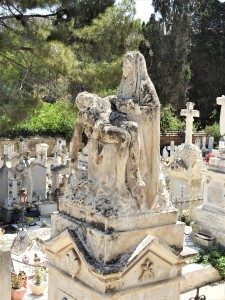 “Ironically, this work was a blessing in disguise! I had never imagined that the very place connected to death would fill my life with such significant experiences. A cemetery gets you in contact with all the levels of society, from the poorest to the richest, from the average person to the most successful. You learn a lot about humanity’s weaknesses and strengths, about love and hate, about repentance and revenge, about the excruciating suffering of illnesses and death. Ultimately, when the time came, it was actually difficult to leave this role.”
“Ironically, this work was a blessing in disguise! I had never imagined that the very place connected to death would fill my life with such significant experiences. A cemetery gets you in contact with all the levels of society, from the poorest to the richest, from the average person to the most successful. You learn a lot about humanity’s weaknesses and strengths, about love and hate, about repentance and revenge, about the excruciating suffering of illnesses and death. Ultimately, when the time came, it was actually difficult to leave this role.”“Some of my experiences at the cemetery are simply unforgettable. Some of them fill me with distate, others chill me to the bone, while a number of them remind me of the unexplainable power of prayer, love, hope and belief. At times, the pain and suffering which I had to deal with became unbearable and I had to seek out the comfort of the convent. More than the freezing cold of the night which reigned within those historical rooms, it was the distressful questions which people confronted me with, day after day, which affected me most.”
“Why is your God doing this to me?” asked a woman while carrying her sixth dead foetus for burial. “Her husband had brought the previous five and I had prayed with him and listened to his suffering. It was the first time that I was facing his wife and the news of yet another miscarriage was intensely sad and shocking. In moments like those, I asked God to guide me and he never failed to assist me. This is not the work of God but of nature, I told her. God would never do this to you! Give a name to each child and pray for each and to each one of them and you will find peace.”
“Around five years passed from this incident. Then, one day, the brother informed me that a couple needed to speak to me. I went out to meet them and they reminded me of their story. ‘I did just like you advised’, the woman told me. ‘And now we have him,’ she said as she reached out to a pram with a beautiful little baby boy inside.”
Stories poured out from the friar. He was still so emotional about them, as if they had just happenned the day before.
“On a very cold and rainy day in February, a smart and well-dressed man came to knock at my door. He gave me a grave number and I informed him that it was located in the common graves’ area. The man asked me to accompany him with a car to see this grave and I drove him there.”
“As soon as I pointed out the grave, the man jumped out of the car, fell to his knees on the ground and began to cry out for his mother’s forgiveness. ‘Forgive me mum! It was not my fault!’ he repeated over and over again while the heavy rain rammed on his back. I felt so distraught for him but eventually I managed to pull him back in the car and help him to calm down.”
“He told me the story of how forty years before, his mother and his wife had a quarrel, and his wife threatened to leave him if he ever got in contact with his mother again. She even forbid him from going to his mother’s funeral, calling him twice at his office on that day to confirm that he had abided to her rules. ‘We have four children and I did not want to mess up my family,’ he informed me, leaving me dumbfounded.”
It was very compelling to witness such hate and thirst for revenge, even after death.
“One day I was asked to give advice to a very affluent man who came to buy a plot to construct a chapel in the cemetery. He was insisting that only he and his wife, their children and their offsprings could be buried in this chapel, leaving out all his sons’ wives, explicitly named in a contract. I told him that this was very uncharitable on his part but he was resolute. I warned him that on knowing about this, his sons would curse him and his wife but he brushed this comment off, ensuring me that he was leaving them all well off.”
“The old couple died and they were buried in the chapel. All went well until one of his sons was widowed. He came to us to make arrangements for his wife’s burial in the family chapel. As soon as he identified himself, I braced myself for trouble since it was clear that he knew nothing about his parents’ decision. He could not believe his ears when we informed him that he could not bury his wife in the chapel. He got so angry and swore so badly, cursing his parents over and over again, that we had to threaten him with the police. Matters worsened further when he realized that this condition affected also all his brothers. He called them all and they came to the cemetery in a frenzy, infuriated at this unexpected news.”
“No matter how much they insisted with us to eliminate this condition, there was nothing we could do. The woman had to be buried in a new grave. All the other brothers bought a new grave too. Their parents’ richly adorned and expensive chapel now lies abandoned and in ruins.”
Nowadays the cemetery is no longer administered by the Capuchin friars.
(This article was published in the SENIOR TIMES – NOVEMBER issued with The Times of Malta on 15th November 2018)
-
Take me to church
“ ‘They have hit our church!’ cried a man as he stumbled down in the tunnel which was located under the Mall Garden. We were huddling in there for shelter together with many other people as the bombs came down over Floriana,” reminisced Pawlu Piscopo who was eight at the time.
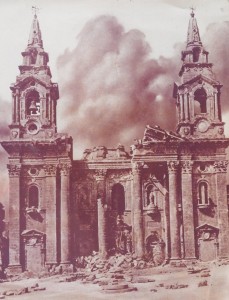 “At this horrible news, my father grabbed me and my brother by the hand and took us out of the tunnel and over to the granaries where a very sad spectacle awaited us. St Publius’ Church had suffered a direct hit. Its dome was gone and the area was surrounded in rubble. Thirteen people who were taking cover in the church’s crypt were killed and eleven more were injured. That was the blackest moment in the history of the parish church of Floriana: April 28, 1942 at 7:50am.”
“At this horrible news, my father grabbed me and my brother by the hand and took us out of the tunnel and over to the granaries where a very sad spectacle awaited us. St Publius’ Church had suffered a direct hit. Its dome was gone and the area was surrounded in rubble. Thirteen people who were taking cover in the church’s crypt were killed and eleven more were injured. That was the blackest moment in the history of the parish church of Floriana: April 28, 1942 at 7:50am.”After their house had been bombed, Pawlu’s family were allowed to take some respite in a large residence which today houses the Floriana Local Council. Yet for four years, they lived mostly underground in this tunnel which probably saved their lives. They took with them only a few belongings and the most cherished items, including a statue of St Publius which dated back to 1928 and used to adorn the model altar that his father had constructed at home.
“Most families in Malta had a model of an altar or a miniature church at home at the time. Unfortunately, many of these had to be abandoned during the war and a good number of them were destroyed when the houses were bombed.”
The craft of church model-making had been introduced to our islands by the Knights of St John back in the 16th century, and therefore its knowledge was a distinct tradition. However the adversity of war ravaged even this precious memory until eventually this craft was almost completely forgotten.
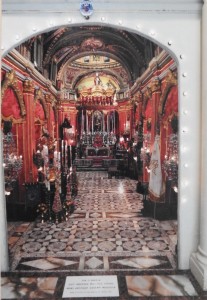 “After the war, people tried to get on with their lives as best as they could. Shops started to open again but those that used to sell miniature items with which to decorate our religious models, dwindled down to almost none. Nevertheless, the passion for model-making was much engrained in our family and when I bought a miniature structure made of four columns and a dome from a man who was leaving Malta to go to live in Australia, my father Carmelo was inspired to use it as the foundation for a model of St Publius’ church,” explained Pawlu.
“After the war, people tried to get on with their lives as best as they could. Shops started to open again but those that used to sell miniature items with which to decorate our religious models, dwindled down to almost none. Nevertheless, the passion for model-making was much engrained in our family and when I bought a miniature structure made of four columns and a dome from a man who was leaving Malta to go to live in Australia, my father Carmelo was inspired to use it as the foundation for a model of St Publius’ church,” explained Pawlu.Carmelo was a very skilled carpenter. He would go from time to time to have a look at the church and then go back to his model and construct an exact copy of the section that he had seen.
“He used the material which was handy at the time, mostly cardboard, wood and gypsum. I helped him out too in order to build the whole church which included ten altars. Eventually, this model reached a huge size of three by four metres and we could walk in it and look above at the beautiful dome,” Pawlu said proudly.
Once his father grew old, Pawlu continued with the work on this church which they had started back in the early 1960s. As he embellished this model, the wish to set up a group for model-makers in order to share this passion with them, burnt within him.
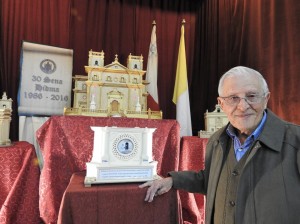 “On February 26, 1986 which happenned to be the tenth anniversary of my father’s demise, I discussed this idea with two of my friends, Raphael Micallef and Tony Terribile, who were very interested in this sector. We all agreed to do something in order to revive this craft and we sent out adverts in the newspapers to announce the set up of this group which we called Għaqda Dilettanti Mudelli ta’ Knejjes (Church Modelling Society). We were very happy when we received a great response from enthusiastic individuals all over Malta. Soon, a commitee was formed and on March 1986, we organized the first exhibition during the first two weeks of Lent wherein the members displayed the works that they had.”
“On February 26, 1986 which happenned to be the tenth anniversary of my father’s demise, I discussed this idea with two of my friends, Raphael Micallef and Tony Terribile, who were very interested in this sector. We all agreed to do something in order to revive this craft and we sent out adverts in the newspapers to announce the set up of this group which we called Għaqda Dilettanti Mudelli ta’ Knejjes (Church Modelling Society). We were very happy when we received a great response from enthusiastic individuals all over Malta. Soon, a commitee was formed and on March 1986, we organized the first exhibition during the first two weeks of Lent wherein the members displayed the works that they had.”It was certainly a great satisfaction to see this society thrive and grow along the years, always adding up new members of various ages. Today, around 400 members form part of this group which operates from its premises at 37, East Street, Valletta.
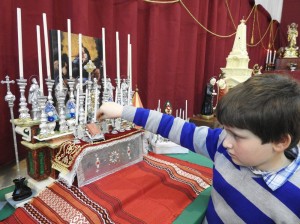 “This year we are delighted to celebrate the 30th anniversary from the establishment of this society,” Pawlu said. “The annual exhibition has been taking place each year. Besides offering the opportunity to showcase our members’ works, this event has served to help our members and the public which visits it, to meditate during the Lent period and to prepare for the Easter celebrations.”
“This year we are delighted to celebrate the 30th anniversary from the establishment of this society,” Pawlu said. “The annual exhibition has been taking place each year. Besides offering the opportunity to showcase our members’ works, this event has served to help our members and the public which visits it, to meditate during the Lent period and to prepare for the Easter celebrations.”A bi-monthly magazine, Il-Knisja Tiegħi (My Church), which was also initiated by Pawlu, is marking its 30th anniversary too. Members have been writing features in it related to different aspects of religious folklore, thereby kindling even further interest in model-making.
Once again this year, the society has organized this exhibition which saw the participation of several of its members. Exhibits varied and included small to large statues of the passion of Christ and Easter, statues of Blessed Mary and several saints, models of altars, church facades and whole churches made of different materials.
 “I hope that I’ll have enough strength to exhibit my large model of St Publius’ church,” revealed Pawlu at one point. “It takes me four weeks to set it up on a large platform and to connect the miniature chandeliers and light fittings to electricity. I am getting old now and such work is very tiring.”
“I hope that I’ll have enough strength to exhibit my large model of St Publius’ church,” revealed Pawlu at one point. “It takes me four weeks to set it up on a large platform and to connect the miniature chandeliers and light fittings to electricity. I am getting old now and such work is very tiring.”Pawlu has been exhibiting this model in a building besides the Floriana Cathecism Museum for many years now, during the feast of St Publius which takes place two weeks after Easter.
“Many people come to visit my model and they are fascinated with it. Tourists take photos besides it and they ask me how I managed to construct it section by section and yet making it look as a whole. I tell them that there are lifetimes of passion invested within it and that it is imbued with a blend of religious meaning and local traditional skills and creativity.”
At 82 years, Pawlu is serene and thankful to see the society which he has founded together with his friends strengthen itself and adding members to it.
“I just wish that it will continue to flourish for very long,” smiled Pawlu as he looked contentedly around him in order to appreciate the beautiful displayed works of the society’s members.
(This article was published in the Easter Supplement which was issued with The Times of Malta dated 21st March 2016)
-
To die for a piece of bread
Although Carnival is generally associated with fun, exuberance and colour, it was sadness, tragedy and darkness which marked this festive season on 11th February 1823, after more than a hundred children died in Valletta. Details of this terrible tragedy are immortalized in black and white in the Malta Government Gazette of Friday, 14th February 1823 which is archived at the National Library of Malta in Valletta.
Initially, news of this tragedy was recorded as a Government Notice in the Malta Government Gazette (No. 557) by Richard Plasket, Chief Secretary to Government, wherein he declared that an investigation was taking place in order to obtain any possible evidence regarding this fatal accident. A published report of these findings was later annexed as a Supplement (pp. 3391-2) to the same journal of 14th February 1823.
In this long report, Plasket includes information that was provided to him by the Archbishop of Malta, persons examined before the Magistrates of Police which comprised both relatives of the victims and other individuals who were present during this incident, and also a medical report related to this case.
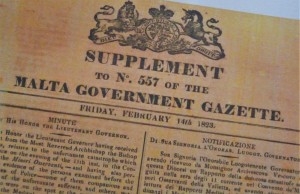 At the beginning of this statement, he furnishes a context for this mishap wherein he mentions that in those years, during the last days of the Carnival celebrations, it had become a tradition to gather a group of boys aged from 8 to 15, who came from the lower classes of Valletta and the Three Cities, to participate in a particular activity. In this event, children who opted to join were taken in a procession to Floriana or elsewhere, and after attending mass, they received some bread which was financed by the Government and other beneficiaries. The main aim of this activity was to protect the children by keeping them out of the riot and confusion of the Carnival that took place in the streets of these cities. The arrangement of this procession was under the responsibility of the Ecclesiastical Directors who taught Cathecism.
At the beginning of this statement, he furnishes a context for this mishap wherein he mentions that in those years, during the last days of the Carnival celebrations, it had become a tradition to gather a group of boys aged from 8 to 15, who came from the lower classes of Valletta and the Three Cities, to participate in a particular activity. In this event, children who opted to join were taken in a procession to Floriana or elsewhere, and after attending mass, they received some bread which was financed by the Government and other beneficiaries. The main aim of this activity was to protect the children by keeping them out of the riot and confusion of the Carnival that took place in the streets of these cities. The arrangement of this procession was under the responsibility of the Ecclesiastical Directors who taught Cathecism.Indeed, according to this tradition, on the 10th February 1823, some children were taken to attend mass at Floriana and were then accompanied to the Convent of the Minori Osservanti in Valletta (today known as the Convent of the Franciscans of St Mary of Jesus or Ta’ Ġieżu) where they were given bread without any difficulty or trouble. The same ritual was intended to take place the day after. Yet no one had any idea that a series of errors would eventually lead to such a great tragedy.
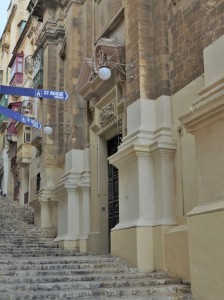 Everything started according to plan on 11th February 1823. The children were gathered in a group and were taken to mass at Floriana. However, when the ceremony lasted an hour longer than usual, the children’s procession to the Convent in Valletta coincided with the end of the Carnival celebrations, when a great number of jubilant people were returning home. This led to the next blunder, as a number of adults and children who were passing by and who knew of this tradition, secretely mixed in with the other boys in order to share the bread which would be distributed.
Everything started according to plan on 11th February 1823. The children were gathered in a group and were taken to mass at Floriana. However, when the ceremony lasted an hour longer than usual, the children’s procession to the Convent in Valletta coincided with the end of the Carnival celebrations, when a great number of jubilant people were returning home. This led to the next blunder, as a number of adults and children who were passing by and who knew of this tradition, secretely mixed in with the other boys in order to share the bread which would be distributed.In line with the usual arrangement, these boys were to enter into a corridor of the Convent from the door of the vestry of the Church, and were to be let out through the opposite door of the Convent in St Ursula Street, where the bread was to be distributed. In order to prevent the boys who received their share from reentering to take a second helping of bread, it became customary to lock the door of the vestry. Yet this time, since the children were late, this door was left open for a longer time so that they could enter. As the sun was setting and darkness crept in, nobody realized that other men and boys who did not form part of the original group were entering too.
Soon, the boys who were queuing in the corridor found themselves being pushed by these trespassers as they forced themselves in. The situation worsened when eventually the vestry door was closed as usual and the children were shoved further at the end of the corridor where a door stood half open so that no one could get back in a second time.
That day was certainly ill-fated when further mistakes continued to occur. In fact, a lamp which was usually lit in the corridor was somehow put out, leaving the overcrowded area in total darkness. This confused the people even more and as they tried to push themselves forward in order to get out, the boys who were at the front fell down a flight of eight steps on top of each other, thereby blocking further the door which happenned to open inwards.
Suddenly, both those who were distributing the bread and the Convent’s neighbours began to hear children shrieking out. They ran to give their assistance but a lot of time was wasted as they tried to open the two doors which led to the corridor in order to reach the people inside.
Eventually, many children were taken out fainting but recovered soon. Others appeared lifeless but were brought to their senses some time afterwards. Regretfully, 110 boys from 8 to 15 years of age perished from suffocation when they were pressed together in such a small place or because they were trampled upon.
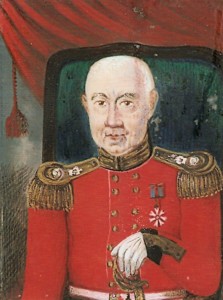 After investigating this accident, the Lieutenant Governor concluded that this was an unfortunate accident caused by the succession of errors mentioned above. Consequently, no one was accused for the death of these children since these acts were not done on purpose to harm them. In fact, Plasket commented that everyone had collaborated to assist these poor boys and even the victims’ relatives had allowed the police and the soldiers to work speedily and diligently in order to save as many children as possible. He insisted that were it not for this, the tragedy could have been much worse.
After investigating this accident, the Lieutenant Governor concluded that this was an unfortunate accident caused by the succession of errors mentioned above. Consequently, no one was accused for the death of these children since these acts were not done on purpose to harm them. In fact, Plasket commented that everyone had collaborated to assist these poor boys and even the victims’ relatives had allowed the police and the soldiers to work speedily and diligently in order to save as many children as possible. He insisted that were it not for this, the tragedy could have been much worse.As I followed further this narrative by focusing on the names mentioned in Plasket’s report, I succeeded to trace the Captain of the Malta Fencibles who led the soldiers during this tragic moment. It was his descendant, Marquis Nicholas De Piro who led me to see Colonel Marquis Giuseppe De Piro’s portrait which is located at Casa Rocca Piccola in Valletta.
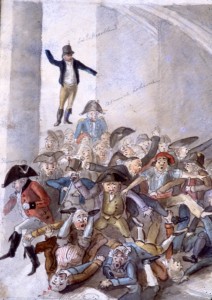 An interesting discussion ensued between us during which the present Marquis informed me also about General Sir George Whitmore who headed the Royal Engineers’ detachment on Malta as its Colonel Commandant between 1811 and 1829. Whitmore had written about his experiences in Malta and had also produced some illustrations related to our islands. Interestingly, Marquis Nicholas De Piro was in possession of a copy of one of these ancient illustrations in the form of a very small slide, which showed some individuals being trampled upon by a group of other people. He wondered whether this slide could be portraying this misfortunate accident of the Carnival of 1823. Yet no children are included in this representation and so it is not clear whether it actually depicts this narrative.
An interesting discussion ensued between us during which the present Marquis informed me also about General Sir George Whitmore who headed the Royal Engineers’ detachment on Malta as its Colonel Commandant between 1811 and 1829. Whitmore had written about his experiences in Malta and had also produced some illustrations related to our islands. Interestingly, Marquis Nicholas De Piro was in possession of a copy of one of these ancient illustrations in the form of a very small slide, which showed some individuals being trampled upon by a group of other people. He wondered whether this slide could be portraying this misfortunate accident of the Carnival of 1823. Yet no children are included in this representation and so it is not clear whether it actually depicts this narrative.My research ended at Ta’ Ġieżu Church and I watched in silence the area where these children lost their lives. Sadness engulfed me when I climbed up the steps on my way back while pondering how these children could end in this way for a piece of bread.
(This article was published in the Carnival Supplement issued with the Times of Malta dated 3rd February 2016)
-
MINIATURE CHURCH DEVOTION
As several bombs were let loose on our islands during the attacks of World War II, their destructive effects threatened more than human lives and buildings. They put at peril our heritage, jeopardizing the roots of our people and the future of our country.
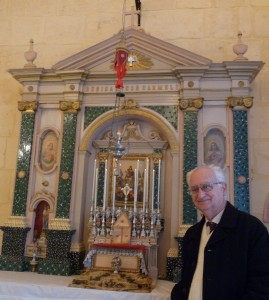 Raphael Micallef, now 82, still recalls the terror felt by the people as the shrill of the air-raid sirens urged them to leave their houses and run for shelters. As an inhabitant of the capital city, he saw his town being shattered to pieces, the damage claiming even unique treasures such as the Chapel of Bones which used to be so popular both with the locals and the tourists. People huddled together in shelters and prayed for their own safety but they also implored for their houses to be spared as these nested within them all their possessions, memories of loved ones, and valuable objects which had been passed on from generation to generation.
Raphael Micallef, now 82, still recalls the terror felt by the people as the shrill of the air-raid sirens urged them to leave their houses and run for shelters. As an inhabitant of the capital city, he saw his town being shattered to pieces, the damage claiming even unique treasures such as the Chapel of Bones which used to be so popular both with the locals and the tourists. People huddled together in shelters and prayed for their own safety but they also implored for their houses to be spared as these nested within them all their possessions, memories of loved ones, and valuable objects which had been passed on from generation to generation.“Valletta and Cottonera suffered some of the severest attacks. Unfortunately within these areas one could find the best examples of church models, many of which had been inherited over many years. Sadly most of them had to be abandoned during the war and almost all of them ended up buried under the rubble of destroyed buildings.”
The craft of church model-making had been introduced to our islands by the Knights of St John back in the 16th century, and therefore it’s knowledge was a distinct tradition. However the adversity of war ravaged even this ancient memory until eventually this craft was almost completely forgotten.
In 1986, this dire situation inspired Raphael, who was an avid enthusiast in church model-making, to make an effort to revive this craft. Together with his friends Tony Terribile and Paul Piscopo, he ventured to initiate an association under the name of Għaqda Dilettanti Mudelli ta’ Knejjes which aimed to instill interest, knowhow and craftsmanship in the art of church model-making. The first president of the association was Guido Lanfranco.
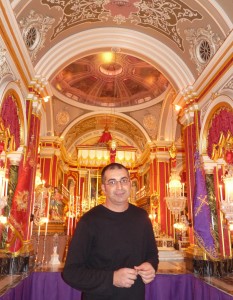 “After 26 years, I am proud to say that now we have our own premises at 37 East Street, Valletta. Although it is a small place, our 400 members meet keenly under its humble roof in order to attend to the regular activities that we organize. Members’ ages differ greatly; starting from young children of 7 and going up to elderly individuals over 90. Everybody is welcome in our group and together we learn and discuss new ideas of how to enrich this cultural tradition. Each of the members has the opportunity to explore his skills and to enhance them further both through the interaction with other members and also under the guidance of craftsmen and historians who are frequently invited to our premises. Many members have built their own church models, some of which one can even walk through – a popular model is that of Simon Mercieca which is often open to the public for viewing. Others have opted to produce statues and accessories which are used in the church models. Most of the members succeed in producing marvellous works, sometimes using common objects and transforming them into intricate decorations which adorne the models.”
“After 26 years, I am proud to say that now we have our own premises at 37 East Street, Valletta. Although it is a small place, our 400 members meet keenly under its humble roof in order to attend to the regular activities that we organize. Members’ ages differ greatly; starting from young children of 7 and going up to elderly individuals over 90. Everybody is welcome in our group and together we learn and discuss new ideas of how to enrich this cultural tradition. Each of the members has the opportunity to explore his skills and to enhance them further both through the interaction with other members and also under the guidance of craftsmen and historians who are frequently invited to our premises. Many members have built their own church models, some of which one can even walk through – a popular model is that of Simon Mercieca which is often open to the public for viewing. Others have opted to produce statues and accessories which are used in the church models. Most of the members succeed in producing marvellous works, sometimes using common objects and transforming them into intricate decorations which adorne the models.”Each year, during the Lenten period, the association organizes an exhibition with some of the works of the members, both to give them the opportunity to share their skill with others and also to attract the public to this old tradition.
“Our association is deeply cherished by its members. In fact some of them have honoured us by donating us prestigious works which belonged to them or to their families. It is a great privilege to possess a number of the few lucky survivors of war which managed to make it, as their owners lovingly took them along with them to safer areas.”
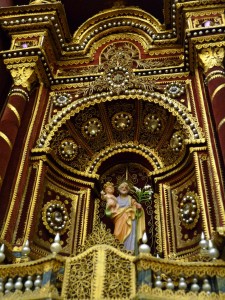 Raphael showed me some of these examples, including an elegant limestone church facade which was designed by Manuel Psaila between 1935 and 1940, and a delicate niche produced out of quilling which dates back to more than 100 years. I was thankful to Raphael for having shared with me this experience. His calm and serene smile was full of pride as his dream of giving the life back to a part of our culture was fulfilled. In fact the association’s work has succeeded to reach much further grounds than any of the members could ever have aspired for, when in 1994, Joseph Sciberras ended up winning a place in the Guinness Book of Records for his church model which was made out of more than 3 million used up matchsticks!
Raphael showed me some of these examples, including an elegant limestone church facade which was designed by Manuel Psaila between 1935 and 1940, and a delicate niche produced out of quilling which dates back to more than 100 years. I was thankful to Raphael for having shared with me this experience. His calm and serene smile was full of pride as his dream of giving the life back to a part of our culture was fulfilled. In fact the association’s work has succeeded to reach much further grounds than any of the members could ever have aspired for, when in 1994, Joseph Sciberras ended up winning a place in the Guinness Book of Records for his church model which was made out of more than 3 million used up matchsticks!I met Joseph Sciberras, now 93, in his son’s home in Attard. Sitting cosily near his bird pet who sung cheerfully at his side, Joseph told me the story of his model which has given him so much satisfaction in his life.
“I was an electrician by trade but during the war I was engaged as a soldier. I remember vividly a particular day when I was at work in Delimara and came to know that Floriana, where I lived, had just been badly hit by bomb attacks. I was desperate to see whether my family was safe and whether our house was damaged, and my superior allowed me to leave. I walked right back to Floriana there and then, and luckily both my family and my house were safe. The enemy used to target his attacks from the Floriana parish church and bomb throughout. We lived nearby and one day our house did fall victim to these attacks, alas like the church which did too anyway.
 Years passed and both our houses and the Floriana parish church were rebuilt. I used to like to observe the facade of our beloved church and when I became a pensioner, I decided to start building an exact model of it. I chose to construct it out of used up matchsticks. Day after day, I worked on my model, constantly taking measures and designing the acute details of the facade.
Years passed and both our houses and the Floriana parish church were rebuilt. I used to like to observe the facade of our beloved church and when I became a pensioner, I decided to start building an exact model of it. I chose to construct it out of used up matchsticks. Day after day, I worked on my model, constantly taking measures and designing the acute details of the facade.When my friends who most of them worked at the Dockyards got to know what I was doing, they started to collect used mathsticks for me. Then when I exhibited my first model to the public, these matchsticks began to arrive from different areas of Malta! I had so many in hand that I ended up doing all the parish church inside out, until eventually the model measured 2 metres by 2 metres with a height of a further 1.5 metres.
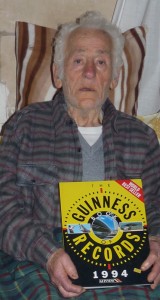 People were totally mesmerized by my model and many, including several tourists, even hugged me when they noticed all the details and work that I had put into my work. It was during one of these exhibitions when some foreigners entered to view my model. I could not be more lucky as these were officials of the Guinness Book of Records and as they studied and measured my model, they informed me that I had succeeded to break the record of the previous winner matchstick model! Soon a certificate arrived together with my inclusion in the Guinness Book of Records.” Spiritedly Joseph showed me his model church displayed on the pages of this famous book. He felt very satisfied that his hard work which took so many years to do was given such an acknowledgement.
People were totally mesmerized by my model and many, including several tourists, even hugged me when they noticed all the details and work that I had put into my work. It was during one of these exhibitions when some foreigners entered to view my model. I could not be more lucky as these were officials of the Guinness Book of Records and as they studied and measured my model, they informed me that I had succeeded to break the record of the previous winner matchstick model! Soon a certificate arrived together with my inclusion in the Guinness Book of Records.” Spiritedly Joseph showed me his model church displayed on the pages of this famous book. He felt very satisfied that his hard work which took so many years to do was given such an acknowledgement.“Ultimately this model became part of my life as I have dedicated much of my love and my time to it. In return it gave me happinness as I saw people admiring it and appreciating my skill and patience. I have taken good care of it all along these years and my final wish is to donate my model to our National Museum of Etnography wherein it could be enjoyed by the public in reminiscence of me and of this ancient cultural tradition. I feel sad to leave it behind me but one cannot live forever, can he?”
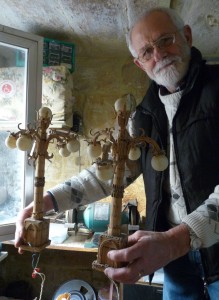 I could not resist the invitation of Francis, Joseph’s son, to visit the workshop of his father in Floriana wherein this model was stored. Humorously Francis indicated the name of the place “Sulfarina” (matchstick). “Interestingly our family was originally known as “Taċ-Ċomb” (of lead) but today, because of my father’s model, everyone knows us as “Tas-Sulfarini” (of the matchsticks). Notwithstanding that my father has stopped working now, I still find packets full of used matchsticks which people leave behind his door.”
I could not resist the invitation of Francis, Joseph’s son, to visit the workshop of his father in Floriana wherein this model was stored. Humorously Francis indicated the name of the place “Sulfarina” (matchstick). “Interestingly our family was originally known as “Taċ-Ċomb” (of lead) but today, because of my father’s model, everyone knows us as “Tas-Sulfarini” (of the matchsticks). Notwithstanding that my father has stopped working now, I still find packets full of used matchsticks which people leave behind his door.”We went into the small building which was totally engulfed by the huge model of the Floriana parish church and by other of Joseph’s works, all made of matchsticks. With some difficulty, Francis managed to find his way through the multitude of wires which his father had included in the model in order to light up the church.
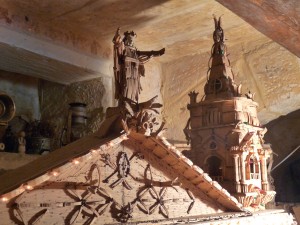 Now I could observe what Joseph had talked about…. the millions of matchsticks, each one placed or thwarted to fit into the shape that he had designed for them…. the facade, the dome, the walls, the columns, the niches, the floor, the minute chairs. There were also small silver apostles which Francis had made for his father to place on the altar. Miniature gorgeous chandeliers made up of common scrap hung beautifully along the flowing arches. It was all set up and ready as if inviting people to go inside.
Now I could observe what Joseph had talked about…. the millions of matchsticks, each one placed or thwarted to fit into the shape that he had designed for them…. the facade, the dome, the walls, the columns, the niches, the floor, the minute chairs. There were also small silver apostles which Francis had made for his father to place on the altar. Miniature gorgeous chandeliers made up of common scrap hung beautifully along the flowing arches. It was all set up and ready as if inviting people to go inside.I gazed inside the model church, my eyes resting and enjoying every detail whilst I slowly understood what this all means… Within this modest model lied the admirable representation of our local skills together with the ability of our people to prevail even through the hardest times.
For further information about the Għaqda Dilettanti Mudelli ta’ Knejjes, one can access their website www.freewebs.com/ghaqda_dilettanti_knejjes or join their facebook page.
(Note: An edited version of this article was published in FIRST magazine Issue April 2012. A pdf version of the published article is available on this website under the title MINIATURE CHURCH DEVOTION).
Travelogue
Archives
| M | T | W | T | F | S | S |
|---|---|---|---|---|---|---|
| « Jan | ||||||
| 1 | 2 | 3 | 4 | 5 | 6 | 7 |
| 8 | 9 | 10 | 11 | 12 | 13 | 14 |
| 15 | 16 | 17 | 18 | 19 | 20 | 21 |
| 22 | 23 | 24 | 25 | 26 | 27 | 28 |
| 29 | 30 | |||||
Recent Posts
- A MATTER OF FATE
- MALTA’S PREHISTORIC TREASURES
- THE MAGIC IS IN THE DETAIL
- THE SELLING GAME
- NEVER FORGOTTEN
- Ġrajjiet mhux mitmuma – 35 sena mit-Traġedja tal-Patrol Boat C23
- AN UNEXPECTED VISIT
- THE SISTERS OF THE CRIB
Comments
- Pauline Harkins on Novella – Li kieku stajt!
- admin on IL-KARNIVAL TRAĠIKU TAL-1823
- Albert on IL-KARNIVAL TRAĠIKU TAL-1823
- Martin Ratcliffe on Love in the time of war
- admin on 24 SENA ILU: IT-TRAĠEDJA TAL-PATROL BOAT C23